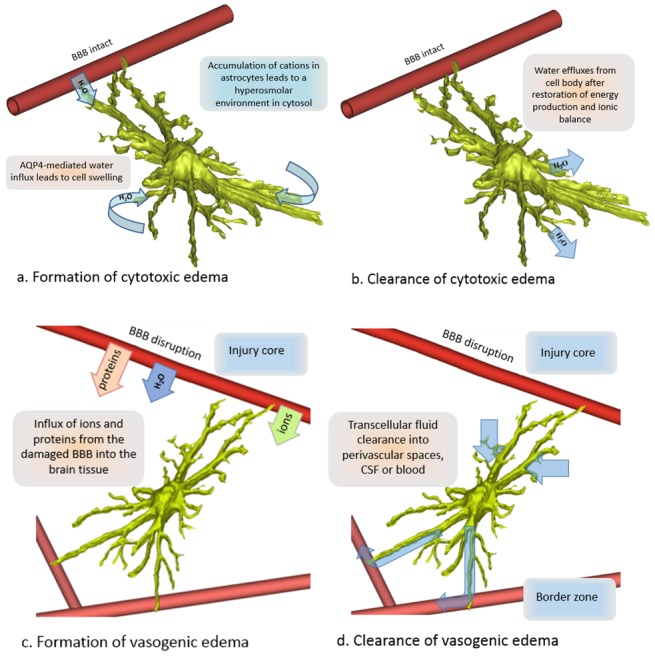Figure 3.

The proposed direction of water transport during the formation and resolution of cytotoxic edema (A,B) and vasogenic edema (C,D). Ischemia-induced hypoxia causes a failure in energy-dependent ion pumps such as Na+-K+-ATPase, leading to accumulation of cations in the cell. Aquaporin 4 (AQP4)-mediated water influx aggravates cytotoxic cell swelling (A). When energy-dependent ion pumps are restored, the cytosol and the extracellular space return to osmotic homeostasis by active ion transport and the passive efflux of water from the cell (B). Between 6-24 hours after ischemic injury, the disruption of the blood brain barrier, as well as sodium influx into the brain at the injury core cause vasogenic edema (C). Water clearance accompanies the clearance of osmolytes, partially through the transcellular route (D). The cell was reconstructed from a stack of confocal images of a single astrocyte. We propose that the opposing roles of AQP4 are explained by the difference in osmotic gradients between blood, extracellular space, and intracellular space during cytotoxic and vasogenic edema as well as the distinct routes of osmolyte clearance.
